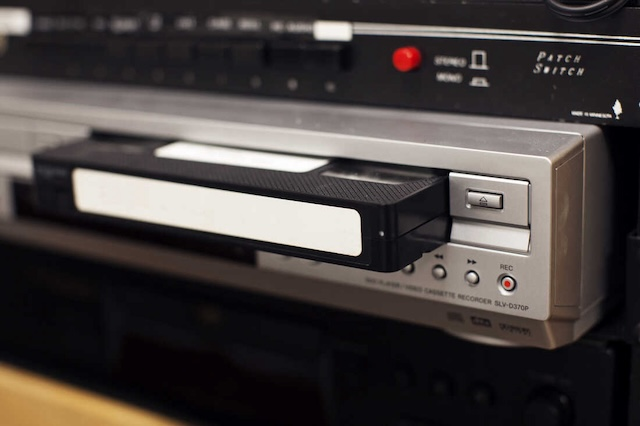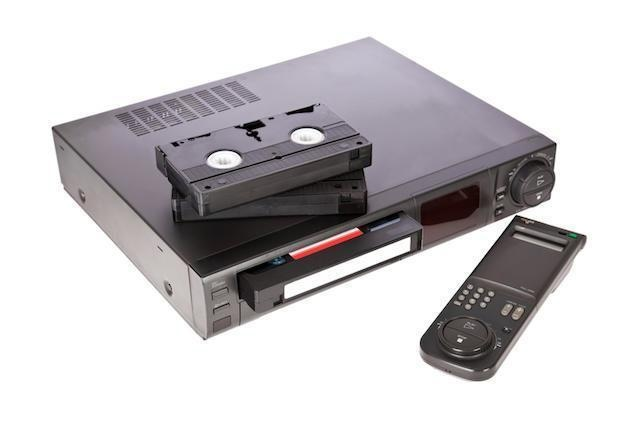The VCR, once a revolutionary piece of home entertainment technology, dramatically changed the way we consumed movies and television shows. From its early beginnings in the 1950s to its dominance in the 1980s and eventual decline in the late 1990s, the VCR’s story is a fascinating chapter in the history of media technology. This article explores the VCR’s evolution, the impact it had on our viewing habits, and its lasting legacy.

The Early Days of the VCR: Pioneering Technology
The concept of recording video for later playback began in the 1950s. The first VCR, introduced by Ampex Corporation in 1956, was the VRX-1000. This machine was groundbreaking but far from practical for the average consumer. With a price tag of $50,000 and the need for a highly skilled operator, the VRX-1000 was primarily used by television networks for professional purposes, such as recording live broadcasts for later airing.
Despite these early limitations, the VCR’s potential for transforming media consumption was clear. Television networks, recognizing the ability to record and rebroadcast content, invested heavily in the technology, spurring further development and leading to the creation of more consumer-friendly models.
The Format Wars: Betamax vs. VHS
In 1965, Sony introduced the CV-2000, a black-and-white reel-to-reel VCR aimed at the consumer market. While this was a step forward, it wasn’t until the mid-1970s that the VCR truly began to take off, thanks to the infamous format war between Sony’s Betamax and JVC’s VHS.

Sony launched Betamax in 1975, offering superior picture quality and a more compact design. However, JVC’s VHS, introduced in 1976, quickly gained favor due to its longer recording time and lower cost. Although Betamax was technically superior, the VHS format’s practical advantages, including the ability to record a full-length movie on a single tape, ultimately won the war. By the early 1980s, VHS had become the dominant format, cementing its place in living rooms across the world.
The Golden Era: VCRs Revolutionize Home Entertainment
The widespread adoption of VHS VCRs in the late 1970s and 1980s revolutionized how people watched television and movies. For the first time, consumers had the power to record shows, pause live TV, and rent or purchase movies to watch at their convenience. This era saw the rise of the video rental industry, with stores like Blockbuster becoming household names.

VHS tapes were relatively inexpensive, easy to store, and durable, making them ideal for home use. The ability to fast forward, rewind, and pause gave viewers unprecedented control over their viewing experience. Families could now watch movies on their schedule, record shows they might miss, and even fast forward through commercials—changing the dynamics of television consumption forever.
The Decline of the VCR: The Digital Age Emerges
As with all technology, the reign of the VCR eventually came to an end. The introduction of the DVD in 1997 marked the beginning of the VCR’s decline. DVDs offered superior picture and sound quality, interactive menus, and a more compact design. They quickly gained popularity, and by the early 2000s, DVD players had replaced VCRs in most homes.

The transition was swift—Hollywood stopped releasing new movies on VHS by 2006, and by 2016, the last VCR was manufactured by Funai Electric. The rapid advancement of digital technology, including the rise of streaming services, rendered the VCR obsolete, marking the end of an era in home entertainment.
The Legacy of the VCR: A Lasting Impact on Media
Despite its obsolescence, the VCR’s impact on media consumption is undeniable. The VCR democratized access to media, allowing people to curate their own viewing experiences in ways that had never been possible before. It also laid the groundwork for the on-demand culture that is now commonplace with streaming services like Netflix and Hulu.

While the VCR may no longer be in use, its legacy lives on. Many people still cherish their VHS collections, and services like Dijifi offer to convert old VHS tapes into digital formats, preserving memories for future generations. The VCR also remains a nostalgic symbol of a simpler time in home entertainment, evoking memories of family movie nights and the excitement of renting a new release.

Conclusion: The VCR’s Place in History
The VCR’s journey from a high-tech luxury to a ubiquitous household item and eventually to a nostalgic relic is a testament to the rapid pace of technological change. It revolutionized the way we consumed media, paving the way for the digital conveniences we enjoy today. As we reflect on the history of the VCR, we can appreciate its role in shaping modern entertainment and the profound impact it had on our lives.


